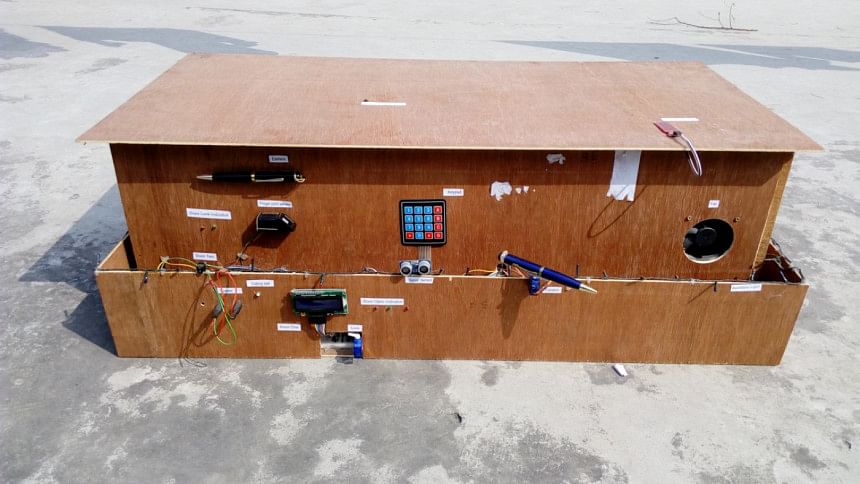Low-cost device for securing homes

Regardless of culture or creed, around the world people commonly share a basic concern: they like to know that when they've gone out, their house is secure. Indeed, they like to feel safe while at home, too. Niaz Mustakim, a master's student of the applied physics, electronics and communication engineering department at Kushtia's Islamic University has designed an advanced home security system to give added reassurance to homeowners and tenants alike.
“We studied existing home security systems,” says Niaz, “and then thought about what features could be added to create an improved, integrated system that was still affordable. In particular, I wanted to incorporate modern technology like social media applications.”
The system Niaz has put together over the past two years, under the supervision of Professor Khalilur Rahman and Associate Professor Khalid Hossain Jewel from his university department, is called the Intelligent Smart and Versatile Home Security System. With inbuilt multi-functionality, it is far more than a standard burglar alarm. It can be used for everyday tasks like opening and closing doors, switching lights and air-conditioning on and off, as well as warning of dangers such as gas leaks and fire.
Niaz's system incorporates fingerprint recognition technology, keypads, displays, signal lights, monitors, cameras and infrared motion sensors, as well as sound, smoke and gas detectors. Designed to immediately inform the system owner via social media of any unauthorised human presence or other dangers, it has potential application for commercial and industrial establishments too.
Through the use of wi-fi technology, home automation will also be possible when one is not at home. A window can be closed remotely if it starts to rain; the air-conditioning can be switched on before returning; outdoor and indoor lighting can be operated in advance.
“The system combines both security and home automation features,” explains Niaz. “At the moment we have managed to incorporate around thirty percent of its potential functions. It took effort to synchronise all the sensors involved but through careful calibration we managed it.”

The innovative system has been submitted to the Institute of Electrical and Electronics Engineers, a leading standard-setting organisation, for recognition. “For home use the system will cost around Tk 30,000 to install,” estimates Khalid Hossain Jewel, “but with commercial production that cost could substantially reduce.” Niaz and his supervisors hope the government might offer its support in making the system widely available.
For Niaz personally, developing the high-tech security system has been enjoyable. “I chose to study engineering because I would be able to use my creativity to develop new technology for mankind's benefit. Engineering has a lot to offer in this way.”


 For all latest news, follow The Daily Star's Google News channel.
For all latest news, follow The Daily Star's Google News channel. 








Comments